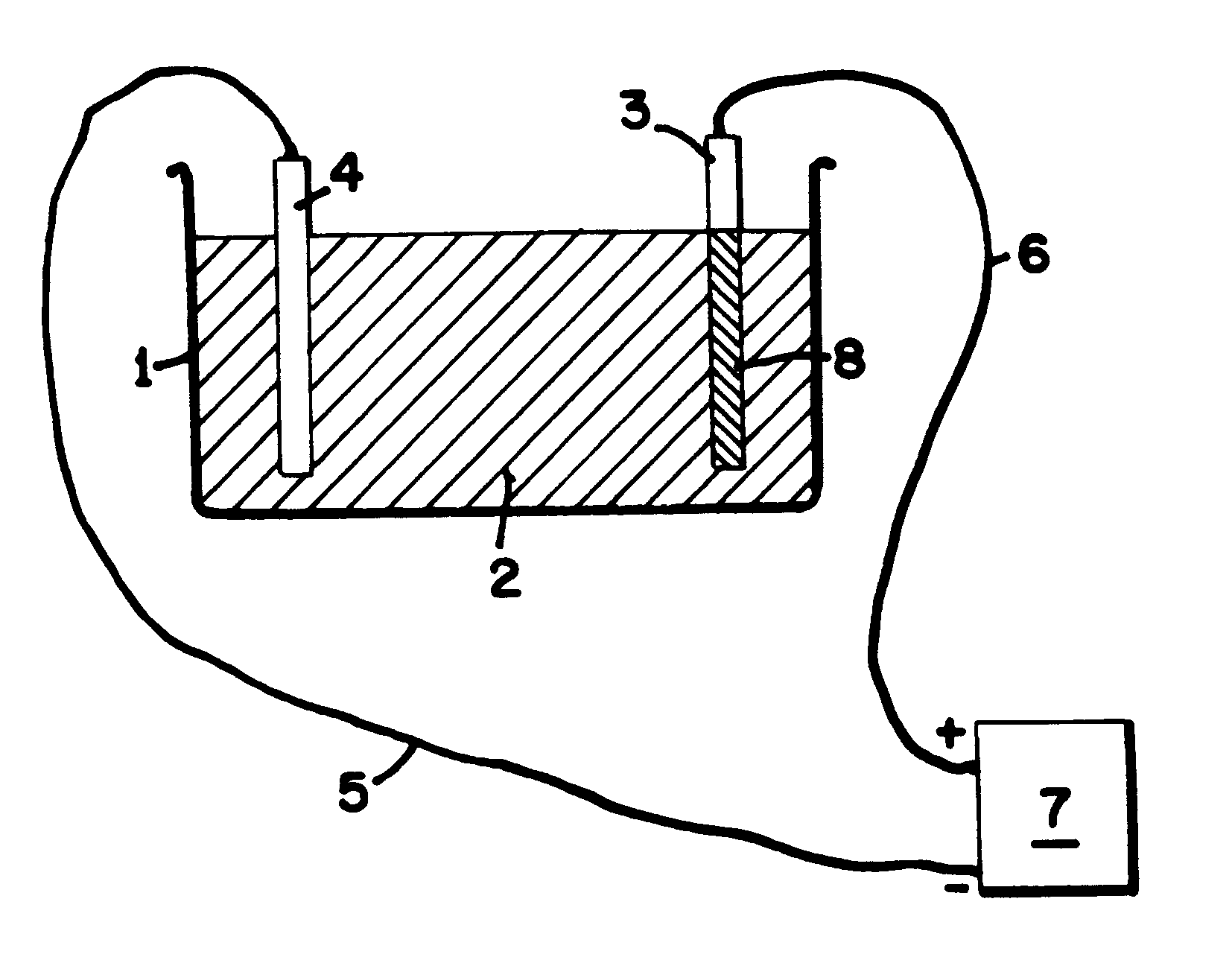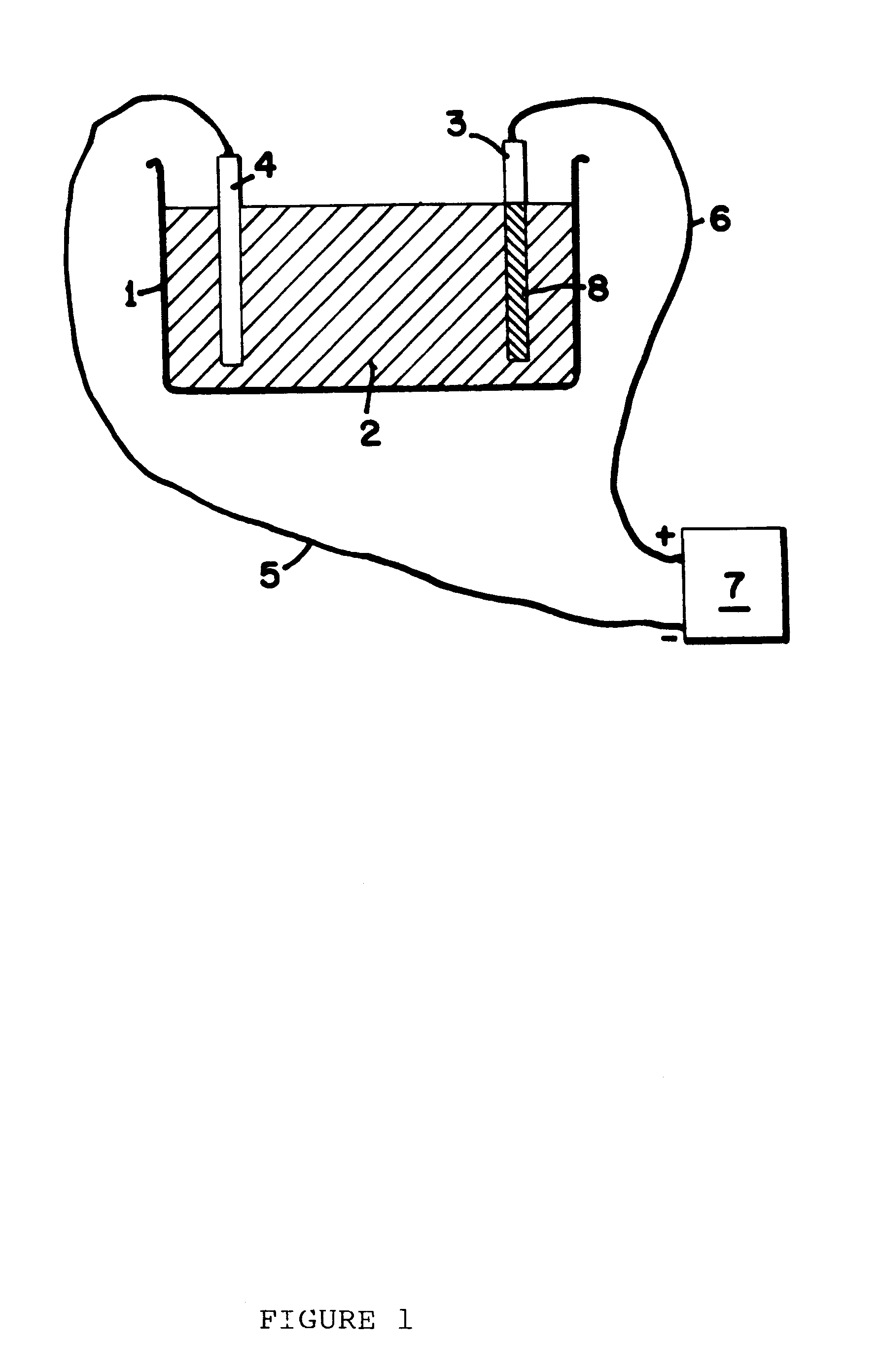Anodization of magnesium and magnesium based alloys
anodization and magnesium based alloy technology, applied in the field of building industry, can solve the problems of high current usage, significant heat absorption by the bath itself, easy discoloration of both materials, etc., and achieve the effect of adding corrosion resistan
- Summary
- Abstract
- Description
- Claims
- Application Information
AI Technical Summary
Benefits of technology
Problems solved by technology
Method used
Image
Examples
example 2
An AM50 magnesium component was anodised at 100 amps per square meter, up to an endpoint voltage of 350V DC. The electrolyte composition was 3% ammonia (expressed as w / v ammonia gas) and 0.2 molar diammonium hydrogen phosphate. The component received a rinse prior to anodization but no other pre-treatment. Upon attainment of the endpoint voltage, the power was maintained to the sample and held at 350V DC for approximately ten minutes. Upon rinsing the sample was found to have an anodic film of approximately 17 microns. The cycle time was approximately 30 minutes.
example 3
An AZ91D magnesium plate was anodised in an electrolyte comprising ammonia at 8% concentration (w / v as ammonia gas) and phosphoric acid at 0.1 molar. The sample was pre-cleaned in a bath comprising 0.2 molar sodium tetraborate and 0.07 molar sodium pyrophosphate at 60EC for five minutes, then it was activated in a bath comprising 35% hydrofluoric acid (v / v) for one minute prior to anodization. The anodization was conducted at 200 amps per square meter, using a DC power supply that attained 465V which was then held for five minutes. A coating of 21.8 microns resulted. The anodizing cycle required a total of 26 minutes.
EXMAPLE 4
An AZ91D magnesium plate was anodised in an electrolyte comprising ammonia at 5.0% (expressed w / v as ammonia gas), 0.1 molar phosphoric acid and 0.03 molar hydrogen peroxide. The plate was pre-cleaned as per example #3 above and activated as per example #3 above. It was then anodised using a power supply comprising a DC voltage that reached 385V, and an AC volt...
example 5
An AZ91D test plate was pre-cleaned in a bath comprising 0.2 molar sodium tetraborate and 0.07 molar sodium pyrophosphate as in example #3 above. It was then anodised in an electrolyte comprising 2.5% ammonia (expressed as ammonia gas) and 0.5 molar diethylene triamine (DETA), together with phosphoric acid at 0.1 molar, at a DC voltage that attained 360V which was held for five minutes. The current density was 200 amps per square meter. The plate was found to have an anodic coating of 28.2 microns. The total cycle time was 21 minutes for the anodizing process.
PUM
| Property | Measurement | Unit |
|---|---|---|
| temperature | aaaaa | aaaaa |
| DC Voltage | aaaaa | aaaaa |
| AC Voltage | aaaaa | aaaaa |
Abstract
Description
Claims
Application Information
 Login to View More
Login to View More - R&D
- Intellectual Property
- Life Sciences
- Materials
- Tech Scout
- Unparalleled Data Quality
- Higher Quality Content
- 60% Fewer Hallucinations
Browse by: Latest US Patents, China's latest patents, Technical Efficacy Thesaurus, Application Domain, Technology Topic, Popular Technical Reports.
© 2025 PatSnap. All rights reserved.Legal|Privacy policy|Modern Slavery Act Transparency Statement|Sitemap|About US| Contact US: help@patsnap.com


